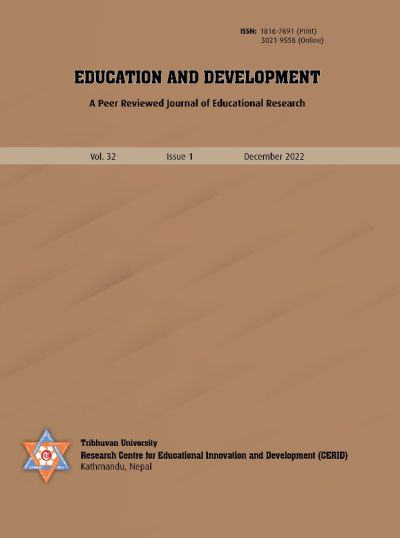Use of Stimulus Variation Skill in Teaching Health Education
DOI:
https://doi.org/10.3126/ed.v32i1.61600Keywords:
college, health education, pedagogy, stimulus variationAbstract
This study has assessed the state of knowledge about stimulus variation skills and practical classroom use among college-level health education teachers. Using a qualitative phenomenological study design, the researchers collected data from health education teachers teaching master's health education in Dolakha, Kathmandu, Bhaktapur, and Chitwan districts. Eighteen health education teachers participated in in-depth qualitative interviews, nineteen teachers' classes were observed, and 4 focus group discussions including 26 teachers were conducted. The qualitative data were analyzed thematically. The results found out from this study demonstrated that there was confusion among teachers whether stimulus variation was a motivational skill or it was a matter of pedagogy. It showed that the participants had a little knowledge of purposeful movement inside the class, effective and appropriate use of gestures, change in speech pattern, interaction style, sense channels, postures and many more stimulus variation skills. Some teachers used intentional movement, and a smaller number of teachers used sensory channel changes and postural changes. In this regard, education college teachers need re-orientations on using all six stimulus variation skills.
Downloads
Downloads
Published
How to Cite
Issue
Section
License
Copyright (c) 2022 The Author(s)

This work is licensed under a Creative Commons Attribution-NonCommercial 4.0 International License.
CC BY-NC 4.0. This license requires that reusers give credit to the creator. It allows reusers to distribute, remix, adapt, and build upon the material in any medium or format, for noncommercial purposes only.




